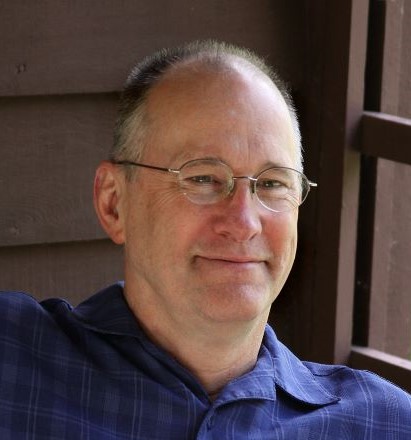We’ve been babysitting our granddaughter Madeline this summer, while her mother and father work. Her other grandparents attend a conservative Baptist church and have made some effort to bring Madeline around to their way of thinking, so I’ve taught Madeline to say, “That’s crazy talk,” anytime her other grandparents talk to her about religion. But it doesn’t seem to be working, because the other church gives her candy, which is unfair. I mean, what kid can resist that? I’d become a Jehovah’s Witness if they passed out Tootsie Rolls. Fortunately, Madeline spends the night at our house a couple times a month and we read her bedtime stories about Eugene Debs and Rosa Parks in an effort to properly educate her.
Like all grandfathers, I think my granddaughter is exceptionally bright. But in other ways, she’s still a 5 year-old girl, prone to the same characteristics of all young children. She was with us the other day and wanted to go swimming at Mike and Rita Goss’s house, but we couldn’t take her and she cried and flung herself around the room and collapsed on the floor in a crumpled, soggy heap. It reminded me of myself last week when I wanted pizza for supper and Joan made me eat spinach and asparagus instead.
We’ve been thinking about the traits and characteristics of grown-up people. We defined a grown-up as someone who is consciously aware of their feelings and takes responsibility for their decisions and actions. Let’s add to our list by saying grown-up people exhibit control of their emotions. They are able to govern their responses, acting thoughtfully and appropriately even in, perhaps especially in, moments of resentment and anger.
I’ve been thinking about anger this week. Some weeks I think about joy and beauty and goodness, but this week I’ve been thinking about anger. When I was young, I was taught that anger was wrong, that it was destructive, and the ruination of many a good person. I was taught to be calm, to quickly forgive, to never bear a grudge. This was easy to do, because nothing grievously wrong had ever been done to me. I was a white male in a culture that prized both whites and males. I came from a middle class family in a culture that valued the middle class. I was Christian in a nation often referred to as a Christian nation. So when I was advised by my parents and my pastors and my teachers not to be angry, it was easy to take their advice, since I had nothing to be angry about. And because life was wonderful and fair and blessed for me, I assumed it was that way for everyone. I wondered how anyone could be angry, and when I would meet an angry person, I would think to myself, “What do they have to be angry about?”
I was down at the farm this past Wednesday evening and drove through the country to a little town for supper. The town has a population of 728, all of them white according the United States Census Bureau. Not one black, not one Hispanic, not one Asian. Five townsmen were seated in the bar complaining about black people, blaming their problems on the Black Lives Matter movement. I wondered if they even know any black people. I almost asked them that, but since there were five of them and only one of me, I decided to practice Quaker silence. But the young waiter, who looked like he’d been baling hay all summer, was having none of it. The more they talked, the angrier he became. Finally, he said, “I don’t want to hear that nonsense. Knock it off or leave.” Much to my surprise, they knocked it off and changed the subject. Both the men and the waiter were angry, but the men used their anger for ill, and the waiter used his anger for good.
Lyman Abbott, the pastor of the Congregational Church in Terre Haute during the Civil War, once said, “Do not teach your children never to be angry; teach them how to be angry.” A good measure of our morality is what makes us angry. If we’re angry because our sense of privilege and entitlement has been violated, that’s a good indication our anger is inappropriate, harmful, and even hateful. But if we’re angry because someone at the bottom of the ladder has been kicked down even lower, that means we still have a conscience, that our sense of morality has not been corrupted and corroded by privilege. Indeed, sometimes being angry is the holiest emotion we can have.
Grown-up people know how to be angry. They know which situations and circumstances merit their anger, and which do not. They use anger to further the cause of justice. Jesus did this. When the moneychangers had taken over the one area of the Temple reserved for Gentiles, the one court set aside for the outsiders, he took whip in hand and drove them out. That is anger in the cause of justice. When people gather in cities and towns across America to decry the abuse of Black people, that is anger in the cause of justice. When a black man is assaulted at Lake Monroe and the county prosecutor receives over 30,000 emails and 10,000 phone calls demanding action, that is anger in the cause of justice.
Do not teach your children never to be angry. Teach them how to be angry.
When Joan and I married, her mother told us never to go to bed mad. Maybe someone gave you that advice too. But I like Phyllis Diller’s advice, who said, “Never go to bed mad. Stay up and fight.”
When the sun of justice has set and the day has darkened and we are weary, we nevertheless need to stay up and fight.
Friends, what will you stay up and fight for this week?

